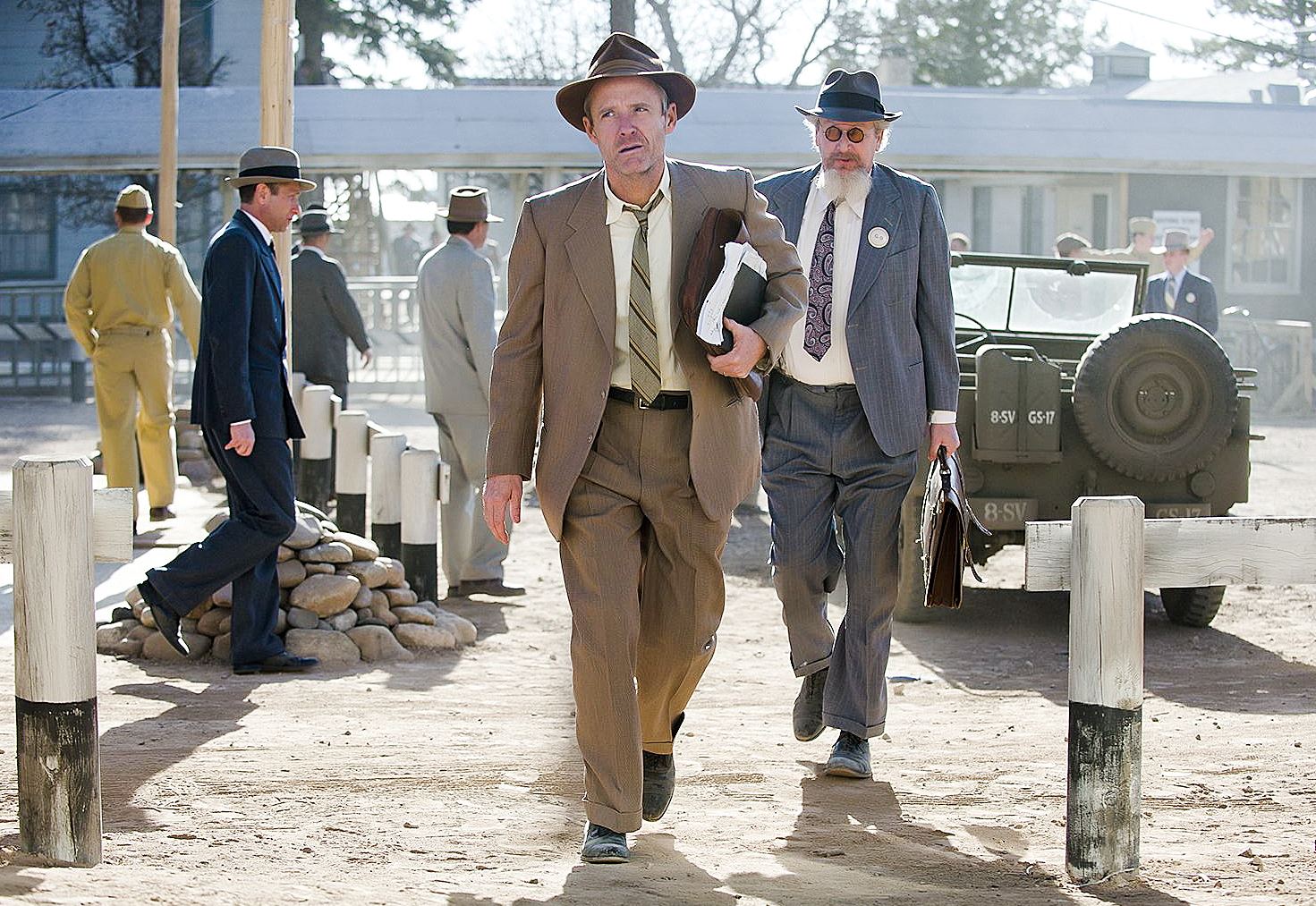“Manhattan” on WGN America aired its second episode on August 3 at 10 PM EDT. This episode draws out two of the show’s major themes: espionage and the tension between the competing plutonium groups.
Poor Sidney Liao, we hardly knew you. In last week’s episode, Liao, the fictitious Chinese-American physicist who is part of Frank Winter’s implosion group, admitted to taking classified information. Liao claimed that he innocent of espionage and just wanted to seek patents for the inventions. After his dramatic arrest last week, this episode shows him subjected to interrogation techniques designed to break him.
Winter intercedes for Liao and obtains an assignment for him in the Pacific theater. But Liao thinks that Winter is merely trading him away in order to get permission to reconstitute his group. After overpowering a guard, Liao commandeers a gun and tries to escape by car. Warned to prevent Liao’s exit, a nervous MP shoots and kills Liao at the Los Alamos Main Gate. We were a little surprised to see a major character killed off so early; this program certainly captures the fast pace of the project.
In reality, no one was ever shot and killed at Los Alamos during the Manhattan Project. However, it is possible that the writers adapted the story of the murder-suicide of Manhattan Project patent lawyer Captain Paul P. Stoutenburgh and his family. Along with his wife and daughter, Stoutenburgh was killed by gunshots to the head in Washington, DC in April 1946. Suspiciously, Stoutenburgh was found dead with the gun in his hand.
Historian Alex Wellerstein has examined Stoutenburgh’s story and conspiracy theories surrounding the murders, including that it was a KGB hit job. Stoutenburgh had helped document and patent every part of the atomic bomb and was privy to much classified information. However, Wellerstein concluded that it was “just another sad story in a world of sad stories.”
In “Manhattan,” a tiny speck of plutonium packaged in a vial deep in an orange crate is delivered by a very nervous young courier. Uncharacteristically, the courier journeys for three days in a hired taxi to Los Alamos. When the taxi driver wants to know what is in the crate, he answers, “Have you ever heard of Pandora ’s Box?”
The microscopic piece of plutonium (150 mg of Pu-239) throws the two plutonium teams into an uproar. Initially, Akley’s team is given permission to use all of the precious plutonium while Winter’s team gets nothing. Helen Prins, the female physicist on Winter’s team, manipulates Charlie Isaacs to get access to plutonium. But at the end of the episode, Winter’s team is downcast as their early implosion technique experiment bombs (pun intended).
In his interview, J. Robert Oppenheimer recalls, “I think the set of problems connected with implosion was the most difficult, and it required very new experimental techniques. It was not a branch of physics anyone was very familiar with. It was, from a theoretical, an observational, and a practical point of view, quite an adventure. Plutonium was a terrible test from beginning to end and never stayed quiet: it gets hot, it is radioactive, you cannot touch it, you have to coat it, and the coating always peels. It is just a terrible substance.”
“Manhattan” could do a better job of explaining to the audience how the plutonium speck is so crucial to the experiments of the two teams. Perhaps this will be made clearer in future episodes.
Overall, “Manhattan” continues to have a deadly serious tone, but the second episode did include a few lighter moments. While babysitting for the Isaacs, Callie Winter steals some peyote and informs Abby Isaacs, to her surprise and delight, “You look like a goddess.” We look forward to seeing whether the incredibly nervous and intense Frank Winter is able to regain his equilibrium and focus his team on the implosion design. The trailer for the next episode suggests that even more challenges await him.





